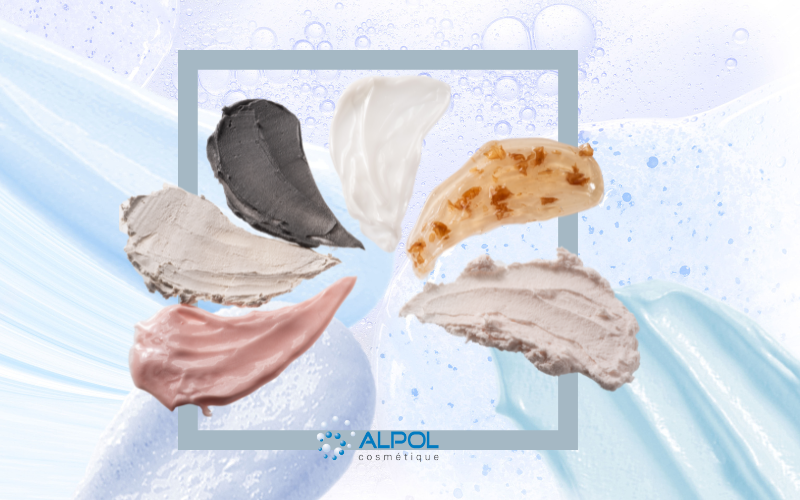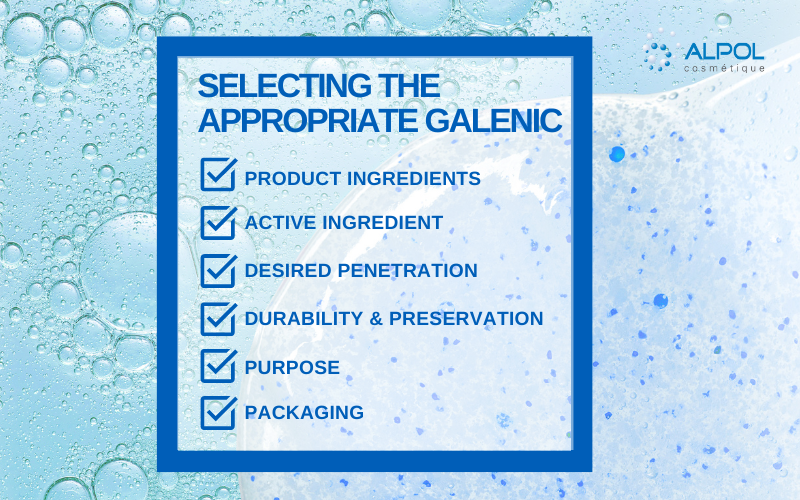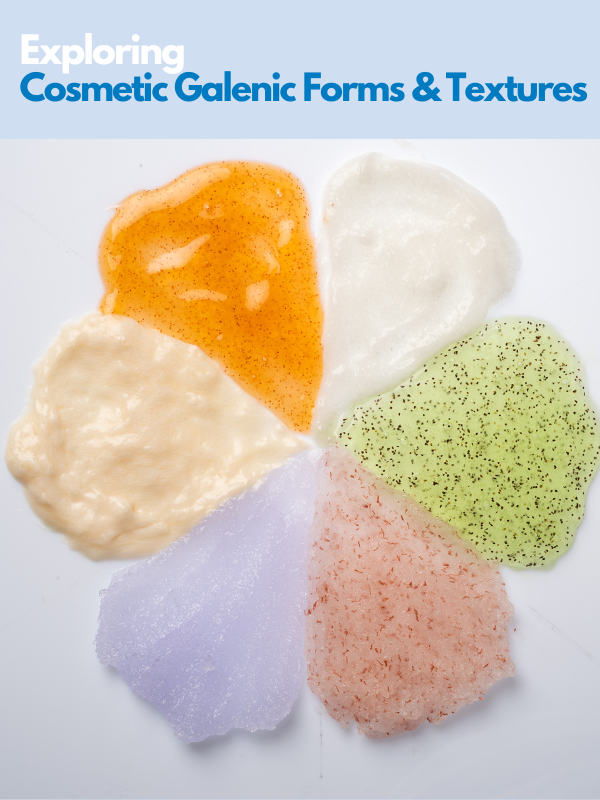What is Galenic formulation?
The definition “galenic formulation” originates from Claudius Galenus, a renowned surgeon, physicist, and philosopher from Greco-Roman antiquity in the second century.
Galenic formulation involves transforming active ingredients with excipients into medication. Also known as “drug form”, it refers to a medication’s appearance—the way it is presented, such as tablet, eye drops, gel, capsule, patch, powder, suppository, injectable solution, etc.
In cosmetics, the galenic form determines the cosmetic texture and product use, such as creams, balms, lotions, serums, sprays, sticks, etc. It is defined right from the specifications of a skin care product development.
Cosmetic galenic formulation is divided into three sorts: solutions, dispersions, and anhydrous forms.

Solutions, Dispersions, and Anhydrous Forms
Solutions
Solutions are homogeneous mixtures composed of a solute dissolved in a solvent. They can be liquid, gaseous, or solid. Advantages of solutions include their ease of use and rapid penetration into the skin. Examples of skin care products in solution form include aqueous lotions and toners.
Dispersions
Dispersions are heterogeneous mixtures in which the substance consists of dispersed particles within a continuous medium, such as suspensions, emulsions, or foams. The advantages of dispersions include:
- Stability, which is similar to the solutions’ one
- Ability to act simultaneously on targets of diverse affinities, such as oily and aqueous phases
- Capability to provide a more substantial coverage effect than the solutions.
Examples of beauty products in the form of dispersions include moisturizing creams, body scrubs, and even foaming facial cleansers.
Anhydrous forms
Anhydrous forms are preparations free from water. No need to add preservatives for these cosmetic textures, antioxidants only work fine. These highly specific galenic forms often target a precise application, such as lip balms, or a specific area of the skin, like solid sticks to address redness. They are ideal for providing lasting nourishment.
Other examples of skin care products with anhydrous forms include powders and greasy substances like concretes (solid fat at room temperature) as well as facial, body, or hair care oils.

Selecting the Appropriate Galenic Form Based on Ingredients and Skin Type
To choose the most suitable cosmetic galenic formulation that caters to skin needs, it is essential to consider:
- Product ingredients: including cosmetic active ingredients, cosmetic preservatives, and their compatibility with different skin types. For instance, in dermatology, you can consider a coldcream that addresses atopic skin to reinforce the skin barrier and to provide nourishment and comfort.
- Active ingredient: some active ingredients are better suited to specific galenic forms. For example, active plant oils are preferably incorporated into balms due to their nourishing and protective texture.
- Desired penetration: solutions and emulsions generally penetrate the skin more effectively than dispersions and anhydrous forms.
- Durability and preservation: anhydrous forms have a longer lifespan than other galenic forms, as they lack water and are less prone to developing bacteria or mold. The durability of various galenic forms remains similar, on the other hand, the anhydrous galenic form carries risks of oxidation. Its cosmetic texture is more sensitive to temperature variations, enhancing the risk of exudation.
- Purpose: choose a galenic form that best caters to consumer needs, such as skin sensation, and that aligns with cosmetic market trends, including innovative applications. For instance, when developing lip care, choosing an anhydrous form is wise for its longevity and moisture resistance, considering the application area.
- Packaging: the galenic formulation can impact the selection of cosmetic packaging. For example, an anhydrous form with a high content of plant oils sensitive to oxidation will be placed in opaque packaging.
Sometimes, the galenic formulation, purpose, and cosmetic packaging form an innovative single whole. As an example, let’s take the metal tip of an eye contour “roll-on.” This innovative packaging brings a mechanical decongestant effect that synergises with the galenic form. In that specific case, we will prefer using a slightly gelled solution form that aims to enhance this decongestant effect, as opposed to selecting an anhydrous form that is incompatible.
In conclusion, galenic forms in cosmetics offer a range of options tailored to the specific needs of each individual. French cosmetic private label ALPOL Cosmetique can assist you with the definition of galenic formulations for your cosmetic range through their expertise in the field.
Contact their teams by clicking here.





